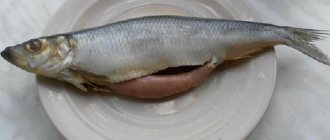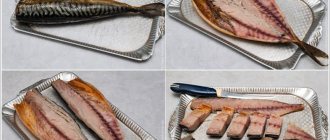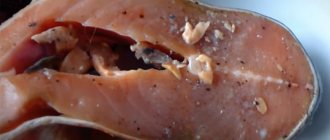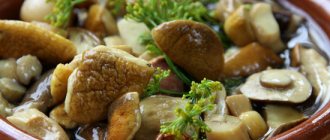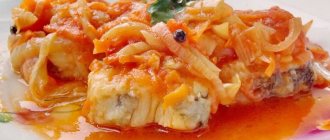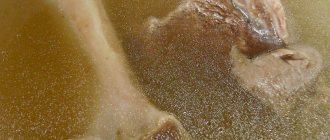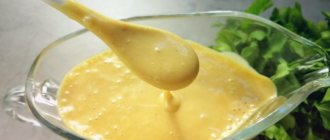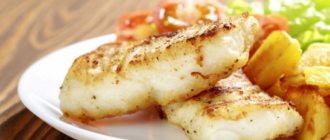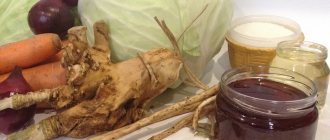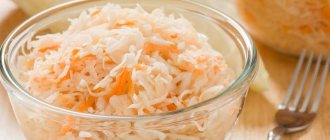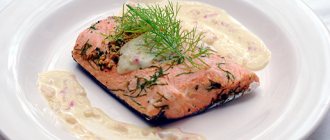Pollock, one might say, is one of the most popular fish in our country. At retail outlets you can buy any type of fish: whole pollock, without head, without head and tail, fillet. By far the cheapest option is to buy whole fish. But what if you need fillet to prepare the intended dish? How to cut pollock with your own hands? Is this a feasible task for a novice housewife?
How to fillet pollock at home
First, let's pay attention to the fish. If you were unable to buy a fresh carcass, but purchased a frozen one, then it must be properly defrosted before cutting. Forget about the microwave and hot water from the tap! Defrosting occurs naturally at room temperature.
Secondly, the thawed carcass must be rid of scales. It happens that even experienced housewives who know how to fillet pollock leave the scales for later. This is not recommended. The scales are practically not removed from an already cut carcass. Therefore, first of all, we remove the scales, and then we move on to the main stages of cutting the fish.
We cut off the head. It is very important to cut at a slight angle so that you can preserve the maximum amount of meat after cutting. Moving the knife over the lower fin, we cut the belly. We remove all the insides. How to cut pollock further? Let's turn the fish over to the other side and perform the manipulations of trimming the head, as we did on the opposite side of the carcass. Now you can easily break and remove the head.
Next, carefully move the knife in the direction of growth of the upper fin to the ribs. We leave the rib part alone and work on the tail. It is from the tail part that they begin to cut off the fish fillets of pollock. We gradually move towards the ribs, turning the fish into a vertical position. This will make it very convenient to cut the meat from the ribs. The final trimming of the fillet occurs in the area of the lower fin. Some chefs trim around the tail, but this requires a very sharp knife. Next, cut off the tail part of the fillet and separate it from the ribs.
Option 3. Pollock in a frying pan, double breaded
Often fried pollock when cooled becomes harsh and not very appetizing, even if it was cooked in flour breading, so the fish is usually cooked one at a time. To preserve the taste of the dish for a longer time, you can use double breading, where the fish is first rolled in flour, then in ground breadcrumbs, and in between, dipped in eggs.
Ingredients:
- 2 pollock carcasses;
- 2 eggs;
- 65 g flour;
- 75 g ground crackers;
- 25 g each of pepper and salt;
- 70 ml of sub-oil;
- 45 g spices for fish;
- dill without rough branches;
- 1 lemon.
Step by step recipe
The fish, gutted and freed from fins and tail, is washed well and cut into pieces of medium or slightly larger size.
The sifted flour is combined with salt and pepper. Pour breadcrumbs into another cup and mix with spices.
Break the eggs into a deep plate and beat lightly.
Each piece of pollock is rolled in flour in turn, then dipped in eggs and rolled in breadcrumbs.
Place in a frying pan in hot oil and fry for 7 minutes on all sides over moderate heat.
Serve with mashed potatoes, garnish with dill sprigs and lemon slices.
Also, double-breaded pollock can be fried not just in a frying pan, but deep-fried. And instead of seasoning, it is permissible to add Provençal herbs in not very large quantities to the breadcrumbs.
How to cut pollock after two fillets have been removed from the carcass?
Now it's the turn of the tweezers. If you don’t have a special fish tool on hand, you can use regular tweezers from a manicure set. Remove the long bones from the fillet by carefully prying and pulling them out using tweezers.
When it comes to skin removal, there are several options. If you plan to prepare minced fish, it is recommended to remove the skin. If you plan to cook steaks, then the skin must be left on. It is this that ultimately provides a crispy, appetizing, rosy piece.
How to cut pollock if you decide to remove the skin? The skin removal process takes just seconds. Gently pry the tip with your hand, pull it away from you, and move towards the tail. In some places the skin may not give in, so we help ourselves with a sharp knife. We perform the same manipulation with the second part of the carcass.
Salting chum salmon at home: delicious recipes
There are many recipes for preparing salted chum salmon, but in any case, before salting, the product must be thawed and cut up. This aspect is important in any recipe.
Classic recipe
To salt one kilogram of fish fillet in the classic way you will need:
- salt and sugar - twenty grams each;
- bay leaf - one piece;
- onion - one medium-sized head;
- black pepper - three peas.
Step-by-step preparation:
- Mix salt and sugar thoroughly in a bowl.
- Roll pieces of fish fillet in the resulting sweet-salty mixture.
- Fish, pepper and bay are placed in a separate container in layers.
- The filled container is covered with a cloth and sent to a dark place for seven hours.
- Fish pieces are washed in running water.
- Place the fillet and onion, cut into half rings, into a dry container in layers.
- The container is placed in the refrigerator for four hours, after which you can enjoy the amazing taste of red fish.
Quick salting
The unexpected appearance of guests will not take the hostess by surprise if she keeps this method of quick pickling in her collection of recipes.
Necessary products for one kilogram of fish fillet:
- salt and sugar - twenty grams each;
- lemon – half a large fruit;
- dried laurel leaves - one piece;
- black pepper - six peas.
The fish stock is cut into small pieces (no more than six millimeters). The chopped fillet is rolled in a salt-sugar mixture and placed in a food container, where pepper and bay leaf are then added.
The resulting fish preparation is poured with lemon juice on top and left on the table for no more than thirty minutes. This time is enough for the fish to be salted. Before serving, the pieces are cleared of excess salt, and the hostess can surprise her guests with a magnificent dish.
Chum salmon in spicy brine
To prepare one kilogram of chum salmon according to this recipe, you will need the following set of products:
- water - one liter;
- salt - twenty grams;
- sugar – fifteen grams;
- fresh herbs (dill and parsley) - a large bunch;
- bay leaf - two pieces;
- black pepper - five peas;
- caraway seeds - half a teaspoon;
- a little more than half of one lemon.
Cooking method:
- Water is poured into the pan and brought to a boil.
- All ingredients are added to boiling water, except lemon, herbs and fish.
- The resulting brine is removed from the heat and cooled to room temperature (no more than thirty degrees).
- Pieces of fillet and finely chopped greens are laid out alternately (in layers) in a glass container.
- Layers of fish and herbs are poured with brine.
- Place lemon cut into slices on the very top of the container.
- The container is placed in the refrigerator for one hour.
- After an hour, you need to remove the lemon from the container and send the fillet to marinate for twelve hours.
- Chum salmon in spicy brine is ready and you can start tasting.
Salting chum salmon with mustard
This recipe, thanks to mustard seeds, can give red fish an extraordinary taste.
How to catch more fish?
A set of products required for salting one kilogram of chum salmon:
- rock salt (coarsely ground) and granulated sugar - 20 grams each;
- yellow mustard seeds – 20 grams;
- laurel leaves - two pieces;
- water - one liter;
- black pepper - six peas.
Cooking method:
- All spices are added to a container with water, except mustard seeds.
- The resulting mixture is brought to a boil over heat.
- The resulting marinade is cooled to room temperature.
- Mustard seeds are added to the marinade.
- The marinade is thoroughly mixed and poured into a container with prepared chum salmon fillet.
- The container is kept in a cold place for three to four hours, after which the pickled red fish can be tasted.
Chum salmon in marinade
To prepare one kilogram of red fish in marinade you will need the following set of products:
- lemon - one piece;
- horseradish or katran root - thirty grams;
- rock salt and granulated sugar - twenty grams each;
- onions - three medium-sized heads;
- garlic - two cloves;
- olive oil - three tablespoons;
- water - one hundred milliliters.
Cooking method:
- The finished chum salmon fillet is cut into small pieces (about two millimeters).
- Horseradish root is grated on a coarse grater.
- The garlic is cut into small pieces, and the onion into rings.
- In a separate container, salt and sugar are dissolved in water.
- Horseradish, onions, garlic, and olive oil are added to the resulting sweet-salty solution.
- The resulting mixture is poured over the fillet.
- Lemon juice is poured on top of the seasoning mixture and fillet.
- The resulting composition is sent to the refrigerator for three days for final marination.
After three days, you get a great dish, ready to serve.
Dry technology for salting chum salmon
To salt red fish using dry technology, you will need fish fillets, salt and sugar. Adding spices, in this case, is not provided. The “rubbing” of salt and sugar is prepared in a ratio of 2:1, respectively.
All the sweet and salty powder is carefully rubbed into the prepared fillet, placed in an airtight container and sent to the refrigerator. The fish will be salted in no less than three days, after which the surface of the finished product is cleaned of excess salt. If the housewife thinks that she has overdone it, then you can get rid of the over-salting using a stream of running water.
How to get rid of odor
After cutting the fish yourself, a rather unpleasant fishy smell remains on the fillet. There are several ways to get rid of it.
- Wash your hands in salt water and lightly sprinkle with citric acid.
- We also soak the cutting board and other tools in water and salt.
- If a strong fishy smell haunts you while cooking, then add a couple of drops of lemon juice to it.
- To remove odor from a frying pan where fish has recently been fried, use ground coffee. Pour a couple of spoons into a frying pan and fry over high heat for 2-3 minutes.
Pollock is a fish from the cod family, whose tender white meat is valued for its high content of proteins and microelements and very low fat content. It is consumed as an independent dish or prepared as fish soups or main courses. Pollock is fried, stewed, boiled, baked - this product, after a short heat treatment, retains all its beneficial properties and is perfectly absorbed by the body. Knowing how to properly clean and cut fish, you can get tender, aromatic meat, which, when combined with vegetables and light sauces, acquires a delicious taste.
How to fry pollock in a frying pan
And it is written clearly. You don’t often see such a huge article, and even with branded videos. Damn, there are 3 of them per article! You will go far, good luck to you! Thanks for the useful and interesting article! The simplest, most accessible and cheapest fish for cooking in batter or simply frying in a pan is pollock. Its fillet is quite thin, so you can fry pollock in a matter of minutes, and its taste is not inferior to many varieties of fish considered elite.
Your email will not be published. Receive notifications of new comments by e-mail. Save my name, email, and website in this browser for the next time I comment.
I accept the user agreement and privacy policy. We regularly publish new interesting recipes. Children love cottage cheese pies with apples: I fry them in a frying pan. The mother-in-law decided to clean the kitchen “in her own way.” The daughter-in-law shared this online.
No-bake gingerbread balls: a delicious treat that's ready in 10 minutes. Things cat owners need to watch out for: They cannot be fed unlimited amounts of food.
Pollock is a fish from the cod family, whose tender white meat is valued for its high content of proteins and microelements and very low fat content. It is consumed as an independent dish or prepared as fish soups or main courses. Pollock is fried, stewed, boiled, baked - this product, after a short heat treatment, retains all its beneficial properties and is perfectly absorbed by the body. Knowing how to properly clean and cut fish, you can get tender, aromatic meat, which, when combined with vegetables and light sauces, acquires a delicious taste.
If you see a bald man at night, a heart attack is guaranteed: funny photos with cats. The old room was turned into a cozy children's room. The renovation took only 2 weeks: photo. To cleanse the intestines of toxins, my aunt drinks a cocktail of flax and spinach.
Home Food and drinks Main course. Olga Ermolaeva June 1, Comments 0. New Discussed Popular. I want to receive. New comments to your personal account. Replies to my comments. Read online - Follow new comments - 6. Cancel Reply. Editing a comment is possible within five minutes after it is created, or until a response to this comment appears.
If the fish is frozen, it must be defrosted. In order not to lose a large amount of useful substances, it is necessary to defrost in natural conditions. It is best to first put it from the freezer into the refrigerator, and after a while remove it and continue defrosting at room temperature.
If time does not allow, then a microwave or cold water will help to defrost. If you bought fillet, then after defrosting you need to wash it and start cooking.
If the fish is whole, then you need to continue cleaning it. Many people believe that pollock has no scales. This assumption is incorrect; the scales are simply small and not always noticeable. They do not spoil the taste of the dish and do not cause inconvenience while eating, however, it is worth cleaning the fish from it.
How to choose a quality product?
The quality and processing time of pollock directly depends on the selected product. If it is stale, then the bones will not separate well, and the meat itself, despite all the cook’s tricks, will turn out watery and tasteless. When choosing fish, pay attention to several aspects.
- Color. Fresh meat is white in color. If there are stains on it or it has a yellow or pink tint, it is better not to buy such a product.
- Smell. Fresh fish has a slightly sweetish aroma, while spoiled meat gives off an unpleasant putrid odor.
- The optimal temperature for storing fish is no higher than -18 degrees. You need to pay attention to the instrument readings on the refrigerator in which pollock is stored.
- In Russia, domestic products and fish from China are sold. Preference should be given to Russian goods. You should pay attention to the size of the carcasses. If they are less than 20 cm in length, these are young animals, the catch of which is prohibited. In Russia this is strictly prohibited by law.
- To preserve the taste properties of pollock , it is first glazed. Frozen fish is covered with a thin and uniform layer of ice, the mass fraction of which should not exceed 4% of the weight of the meat.
Preparing the fish
Pollock is sold frozen:
- whole;
- cleared of heads;
- cleared of heads and tails;
- fish fillet in briquettes.
Before processing, frozen pollock should be left in the refrigerator for 3–4 hours to allow the ice crystals to melt. Then the fish is kept at room temperature for another half hour. And only then they clean and gut. Many cooks begin processing fish carcasses in a semi-frozen state. But then it is difficult to determine what quality it is. And it’s difficult to remove the bones from the meat before it melts.
Pollock fillet fried in a frying pan
It's easy to cook tender pieces of fish in a frying pan. The result is fish with a golden crispy crust that melts in your mouth. The dish is prepared simply, and can be eaten either cold or hot.
To prepare half a kilo of pollock you will need:
- a pair of chicken eggs;
- flour - half a glass;
- salt, pepper - a pinch.
- sunflower oil - 60 ml.
Pollock fillet should be thawed at room temperature - this way the fish will retain all its taste and beneficial properties. All we have to do is prepare everything for frying.
- To do this, whisk the eggs with salt and pepper.
- Heat a frying pan with vegetable oil.
- Dip the pollock pieces into the egg, and then into the flour and place them in a frying pan.
- Fry on both sides over medium heat, turning when done.
- The finished fish acquires a golden color and an appetizing crust.
Pollock will acquire a pleasant sourness if you pour lemon juice on it before frying.
We recommend eating fish with Tartar sauce. To prepare it in natural unsweetened yogurt, chop the pickled cucumbers and squeeze out a clove of garlic. Fried pollock is good on its own or accompanied by boiled potatoes.
How to clean fish?
It is advisable to clean pollock with a special knife for cutting fish. But if you don't have one in the house, a durable table knife with a medium or short blade will do. It must be well sharpened, because you will have to trim the hard fins and bones of the fish. It is better to choose a bamboo or plastic cutting board. Wooden absorbs odor, which will be difficult to get rid of later.
You need to fill a small basin with water - it is needed to clean the fish from scales.
The procedure for cleaning fish must be strictly followed.
- Thawed fish is washed under running cold water.
- Pollock is cleaned of small scales by pointing the knife blade against its growth. The fish is lowered into the water and cleaned, starting from head to tail. Water prevents the scales from scattering in different directions.
- The pollock is washed again under running water and the fins and tail are removed. It is desirable that the fins come out of the body completely, so first make careful cuts along the borders from where they grow. Then they grab the fins with their fingers and pull them towards themselves. If you simply cut them off with a knife or kitchen scissors, some of the bones will remain in the fish. After removing the fins, the tail is cut off.
- The head is cut off diagonally with a knife, 1 cm away from the gill slits and trying not to leave any meat on it below.
- I make a cut in the belly of the fish and pull out the insides. You cannot leave the black film on - it is poisonous. But if the pollock meat is loose and very soft, it is problematic to do this with a knife. A simple way out of the situation: rinse the cleaned abdomen with water, grabbing pieces of film with your fingers.
- The cleaned fish is dried on a napkin.
If the preparation of a dish requires pollock fillet, then the next step after cleaning will be cutting it into fillet pieces. If these actions are performed for the first time, difficulties may arise. It is important not to damage the integrity of the pieces in order to obtain even and beautiful pieces of meat.
To fillet pollock, you need to choose a large, but not old fish.
How to clean frozen pollock
Fried pollock can easily be included in the list of bachelor dishes (along with pasta and scrambled eggs). There is no fuss with this fish at all. We often buy a couple of fish at our favorite supermarket, just enough for one frying pan. An excellent option for dinner when you are flying at full speed from your dacha or from work, and there is absolutely no time left for culinary delights. It turned out that not everyone knows how to fry pollock . And even more of our compatriots are wondering whether pollock needs to be cleaned . We decided to address all these and other questions in this article. Moreover, pollock was fried in a frying pan for dinner yesterday.
How to clean pollock?
To be honest, at the beginning of my married life, before I became closely acquainted with my mother-in-law, I didn’t clean pollock at all. No, I prepared to cook it. But in my naivety I thought that he had no scales. Maybe it was peeling off while I was washing it. I don’t know... In general, my mother-in-law opened my eyes: there are small scales on the skin of pollock. They are very small and delicate. Simply run a knife lightly along the skin (from the tail to the head).
But it is convenient to trim the fins and tail with scissors. Chick-chick and you're done.
Pollock is usually sold gutted, without the head. Therefore, again, we trim the abdomen with scissors. There are no insides, but there is a thin black film - we remove it with a knife.
That's it, all that's left is to cut it into pieces.
How to fry pollock in a frying pan?
Pour oil into the frying pan and light the fire.
As you can see, everything is simple. How do you fry pollock? Or maybe stew or bake? Share the recipe in the comment, we will be glad
